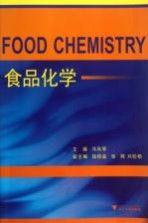图书介绍
食品化学 英文2025|PDF|Epub|mobi|kindle电子书版本百度云盘下载

- 冯凤琴主编 著
- 出版社: 杭州:浙江大学出版社
- ISBN:9787308121224
- 出版时间:2013
- 标注页数:238页
- 文件大小:48MB
- 文件页数:249页
- 主题词:食品化学-英文
PDF下载
下载说明
食品化学 英文PDF格式电子书版下载
下载的文件为RAR压缩包。需要使用解压软件进行解压得到PDF格式图书。建议使用BT下载工具Free Download Manager进行下载,简称FDM(免费,没有广告,支持多平台)。本站资源全部打包为BT种子。所以需要使用专业的BT下载软件进行下载。如BitComet qBittorrent uTorrent等BT下载工具。迅雷目前由于本站不是热门资源。不推荐使用!后期资源热门了。安装了迅雷也可以迅雷进行下载!
(文件页数 要大于 标注页数,上中下等多册电子书除外)
注意:本站所有压缩包均有解压码: 点击下载压缩包解压工具
图书目录
Chapter 1 Introduction1
1.1 Definition1
1.1.1 Food and Food Science1
1.1.2 Food Chemistry1
1.1.3 Relationship between Food Chemistry and Other Disciplines2
1.2 Content and Development of Food Chemistry2
1.3 Approach to the Study of Food Chemistry3
1.3.1 Quality and Safety Attributes3
1.3.2 Chemical and Biochemical Reactions4
1.3.3 Effect of Reactions on the Quality and Safety of Food5
1.3.4 Solve Problems by Analyzing and Controlling the Important Variables6
Glossary7
Chapter 2 Water9
2.1 Introduction9
2.2 Physical Properties and Structure of Water9
2.2.1 Physical Properties9
2.2.2 Structure of the Water Molecule11
2.2.3 Water Intermolecular Interaction12
2.2.4 Architecture of Water13
2.3 Quantitative Description of Water in Foods15
2.3.1 Water Content16
2.3.2 Water Activity17
2.3.3 Molecular Mobility18
2.4 Water Activity and Food Properties19
2.4.1 Freezing19
2.4.2 Combined Methods Approach to Food Stability21
Glossary23
Chapter 3 Carbohydrate26
3.1 Introduction26
3.1.1 Definition26
3.1.2 Classification26
3.1.3 Function and Distribution27
3.2 Physical and Chemical Properties28
3.2.1 Physical Properties28
3.2.2 Chemical Properties30
3.3 Common Sugars33
3.3.1 Monosaccharides33
3.3.2 Oligosaccharides34
3.3.3 Polysaccharide37
3.3.4 Starch40
3.3.5 Cellulose43
3.3.6 Pectin44
Glossary45
Chapter 4 Protein49
4.1 Introduction49
4.1.1 Definition49
4.1.2 Classification50
4.2 Composition51
4.2.1 Structure51
4.2.2 Amino Acids52
4.3 Properties54
4.3.1 Denaturation54
4.3.2 Gelation59
4.3.3 Emulsifying Properties61
4.3.4 Foaming Properties64
4.4 Food Proteins65
4.4.1 Animal Proteins65
4.4.2 Plant Proteins71
4.5 Peptides72
4.5.1 Properties72
4.5.2 Bioactive Peptides in Food72
Glossary73
Chapter 5 Lipids78
5.1 Introduction78
5.1.1 Definition and Roles78
5.1.2 Classification of Lipids79
5.1.3 Components of Triacyglycerols79
5.1.4 Edible Oils81
5.2 Physical Properties83
5.2.1 Melting Point and Polymorphism83
5.2.2 Emulsions and Emulsifiers87
5.3 Chemical Reactivity of Fats and Oils89
5.3.1 Oxidation89
5.3.2 Other Reaction95
5.4 Functional Lipids98
5.4.1 Functional Fatty Acids98
5.4.2 Phytosterol99
5.4.3 Phospholipids100
5.5 Fat Replacers and Mimetics100
5.5.1 Fat Substitutes101
5.5.2 Fat Mimetics101
Glossary102
Chapter 6 Vitamins106
6.1 Introduction106
6.2 Fat-Soluble Vitamins107
6.2.1 Vitamin A107
6.2.2 Vitamin D109
6.2.3 Vitamin E110
6.2.4 Vitamin K111
6.3 Water-Soluble Vitamins115
6.3.1 Ascorbic Acid115
6.3.2 Thiamine(Vitamin B1)119
6.3.3 Riboflavin(Vitamin B2)122
6.3.4 Nicotinamide(Niacin)123
6.3.5 Pyridoxine(Pyridoxal,Vitamin B6)123
6.3.6 Folic Acid124
6.3.7 Biotin125
6.3.8 Pantothenic Acid126
6.3.9 Cyanocobalamin(Vitamin B12)127
Glossary128
Chapter 7 Enzymes130
7.1 Introduction130
7.2 General Remarks130
7.2.1 Catalysis130
7.2.2 Specificity131
7.2.3 Structures131
7.2.4 Nomenclature132
7.2.5 Activity Units133
7.2.6 Determination of Enzyme Activity133
7.2.7 Reasons for Catalytic Activity134
7.2.8 Kinetics of Enzyme-Catalyzed Reactions135
7.3 Enzymes in Food141
7.3.1 Amylases141
7.3.2 Pectic Enzyme145
7.3.3 Cellulases and Hemicellulases147
7.3.4 Proteases147
7.3.5 Lipases150
7.4 Enzyme Utilization in the Food Industry151
7.4.1 Starch151
7.4.2 Baking151
7.4.3 Brewing152
7.4.4 Cheese(Flavour)152
7.4.5 Coffee & Tea152
7.4.6 Dietetics153
7.4.7 Egg153
7.4.8 Juice&Wine153
Glossary155
Chapter 8 Colorants158
8.1 Introduction158
8.2 Natural Pigments159
8.2.1 Chlorophyll159
8.2.2 Heme Compounds164
8.2.3 Carotenoids168
8.2.4 Phenolic Compound172
8.3 Synthetic Colorants181
Glossary184
Chapter 9 Flavors188
9.1 Introduction188
9.2 Taste and Nonspecific Saporous Sensations188
9.2.1 Taste Substances:Sweet,Bitter,Sour,and Salty189
9.2.2 Flavor Enhancers190
9.2.3 Astringency191
9.2.4 Pungency192
9.2.5 Cooling192
9.3 Vegetable,Fruit,and Spice Flavors193
9.3.1 Sulfur-Containing Volatiles in Allium sp193
9.3.2 Sulfur-Containing Volatiles in the Cruciferae194
9.3.3 Unique Sulfur Compound in Shiitake Mushrooms196
9.3.4 Methoxy Alkyl Pyrazine Volatiles in Vegetables196
9.3.5 Enzymically Derived Volatiles from Fatty Acids197
9.3.6 Volatiles from Branched-Chain Amino Acids199
9.3.7 Flavors Derived from the Shikimic Acid Pathway199
9.3.8 Volatile Terpenoids in Flavors200
9.4 Flavor Volatiles in Muscle Foods and Milk202
9.4.1 Species-Related Flavors of Meats and Milk from Ruminants202
9.4.2 Species-Related Flavors of Meats from Nonruminants204
9.4.3 Volatiles in Fish and Seafood Flavors205
9.5 Development of Process or Reaction Flavor Volatiles206
9.5.1 Thermally Induced Process Flavors207
9.5.2 Volatiles Derived from Oxidative Cleavage of Carotenoids211
9.6 Future Directions of Flavor Chemistry and Technology212
Glossary213
Chapter 10 Food Additive214
10.1 Introduction214
10.1.1 Definition214
10.1.2 Classification214
10.2 Acids215
10.3 Bases217
10.4 Buffer Systems and Salts218
10.4.1 Buffers and pH Control in Foods218
10.4.2 Salts in Processed Dairy Foods219
10.5 Antimicrobial Agents220
10.5.1 Acid Antimicrobial220
10.5.2 Ester Antimicrobial223
10.5.3 Inorganic Antimicrobial224
10.5.4 Biological Antimicrobial225
10.6 Sweeteners226
10.6.1 Saccharin226
10.6.2 Aspartame226
10.6.3 Acesulfame K228
10.6.4 Cyclamate228
10.7 Emulsifier229
10.7.1 Emulsifier Action230
10.7.2 Synthetic Emulsifiers233
10.8 Antioxidants235
Glossary235
References237
热门推荐
- 1985471.html
- 1384445.html
- 2554351.html
- 3782617.html
- 981866.html
- 2394373.html
- 911878.html
- 3580087.html
- 2238382.html
- 2271818.html
- http://www.ickdjs.cc/book_3776516.html
- http://www.ickdjs.cc/book_2268538.html
- http://www.ickdjs.cc/book_198015.html
- http://www.ickdjs.cc/book_1942929.html
- http://www.ickdjs.cc/book_1922159.html
- http://www.ickdjs.cc/book_2299966.html
- http://www.ickdjs.cc/book_715513.html
- http://www.ickdjs.cc/book_1617548.html
- http://www.ickdjs.cc/book_519857.html
- http://www.ickdjs.cc/book_2818928.html